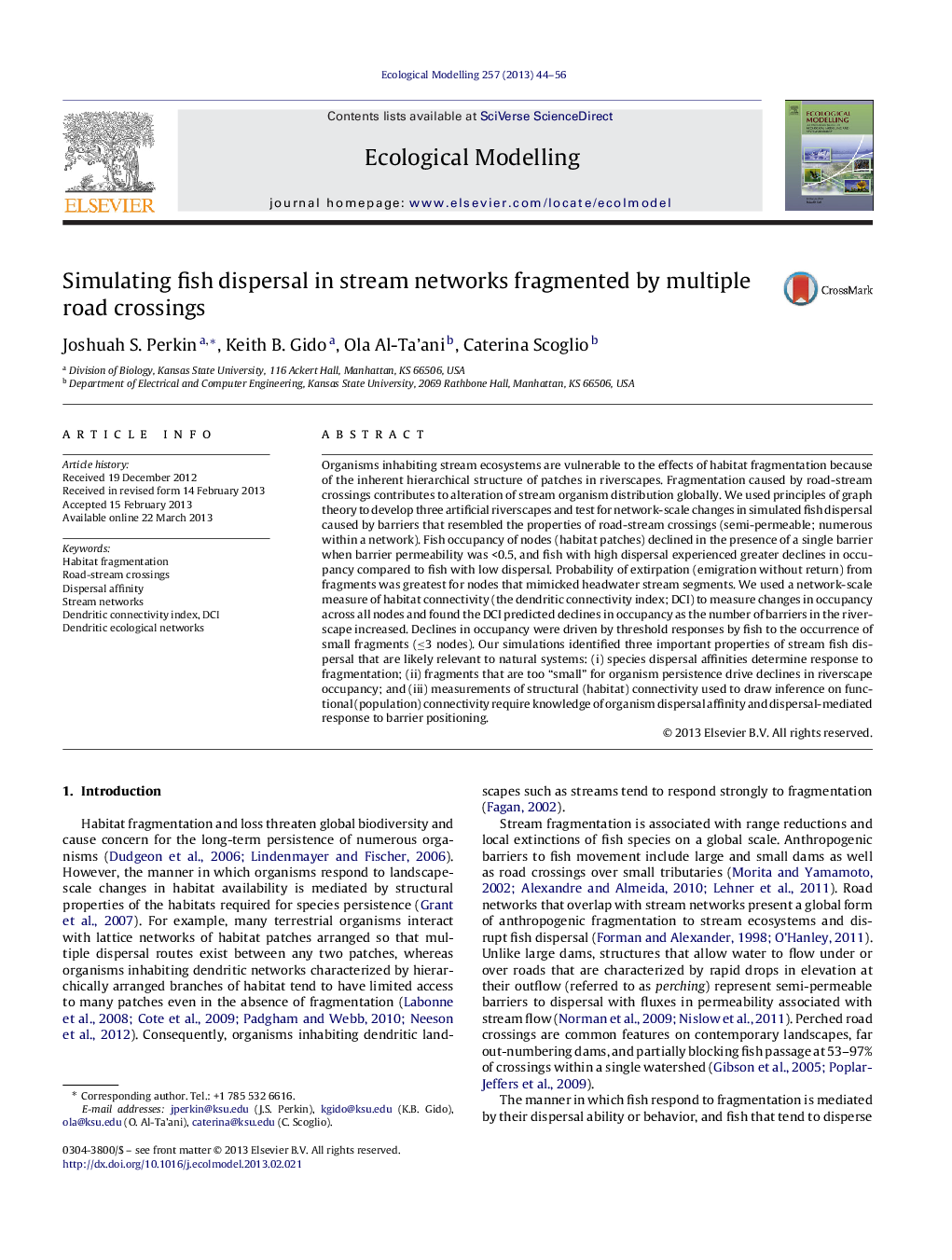| Article ID | Journal | Published Year | Pages | File Type |
|---|---|---|---|---|
| 4376127 | Ecological Modelling | 2013 | 13 Pages |
Organisms inhabiting stream ecosystems are vulnerable to the effects of habitat fragmentation because of the inherent hierarchical structure of patches in riverscapes. Fragmentation caused by road-stream crossings contributes to alteration of stream organism distribution globally. We used principles of graph theory to develop three artificial riverscapes and test for network-scale changes in simulated fish dispersal caused by barriers that resembled the properties of road-stream crossings (semi-permeable; numerous within a network). Fish occupancy of nodes (habitat patches) declined in the presence of a single barrier when barrier permeability was <0.5, and fish with high dispersal experienced greater declines in occupancy compared to fish with low dispersal. Probability of extirpation (emigration without return) from fragments was greatest for nodes that mimicked headwater stream segments. We used a network-scale measure of habitat connectivity (the dendritic connectivity index; DCI) to measure changes in occupancy across all nodes and found the DCI predicted declines in occupancy as the number of barriers in the riverscape increased. Declines in occupancy were driven by threshold responses by fish to the occurrence of small fragments (≤3 nodes). Our simulations identified three important properties of stream fish dispersal that are likely relevant to natural systems: (i) species dispersal affinities determine response to fragmentation; (ii) fragments that are too “small” for organism persistence drive declines in riverscape occupancy; and (iii) measurements of structural (habitat) connectivity used to draw inference on functional (population) connectivity require knowledge of organism dispersal affinity and dispersal-mediated response to barrier positioning.
► We developed three hypothetical river networks using graph theory. ► Simulated fish dispersal revealed key mediators of response to fragmentation. ► Dispersal affinity determined response to barrier location, number and permeability. ► Network occupancy indicated a threshold response to number of connected nodes. ► Abundance of smaller fragments drove declines in network occupancy.
